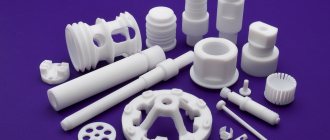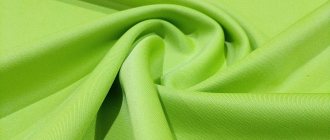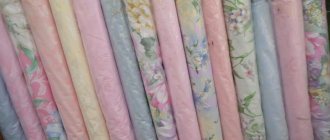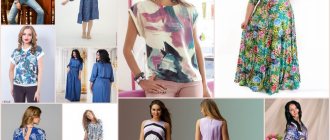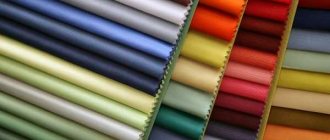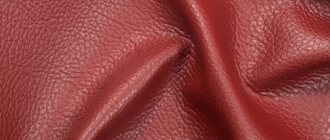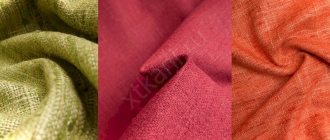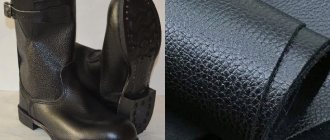Properties and description
Dense lightweight synthetic material with geometric diamond-shaped or square, small holes on the surface. Obtained by melting polymers, it has the name Spunbond (spunlaid) derived from the production method.
These types of materials are called non-woven because the threads obtained by melting polypropylene granules do not need to be woven. They are fastened in several ways without using adhesives.
Spunbond is a synthetic fabric made using the same technology. The material is obtained from polymer threads or fibers without the use of weaving equipment. The material looks like a homogeneous fabric with a barely noticeable geometric pattern (interlacing of threads).
Environmentally friendly fiber allows air to pass through and does not absorb moisture. The material is heat-resistant, durable, lightweight. Its characteristics clearly demonstrate why spunbond is needed, and determined the areas of use of non-woven fabric.
Geotextiles are distinguished by the thickness of the fibers and the density of their bonding, which determines the purpose of the material.
Types and their properties
Depending on the area of application, the following types of spunbond are distinguished:
- covering spunbond is used to protect plants from spring or autumn frosts. It is able to prevent overheating of the root system in the summer heat. It is also used to equip the roofs of greenhouses and greenhouses;
- The laminated spunbond is coated with special impregnations and repels moisture. It is used to make workwear, including for operating rooms;
- furniture spunbond - a durable elastic fabric used for making mattresses or as a protective layer between the upholstery and the filling.
Spunbond can be colored: green, blue, light blue, brown. It is used to create shoe covers, disposable gowns, hats, and promotional products.
The covering material spunbond is many times superior to conventional film in its technical characteristics and performance properties. It prevents the development of mold and gray rot, and makes it easier to care for crops. The following types are distinguished:
- Spunbond 60 black protects plants from severe frosts, accelerates soil warming, due to which seedlings can be planted earlier. The canvas inhibits the growth of weeds, does not allow the fruits to come into contact with the ground, preventing rotting;
- White 60 is suitable for equipping greenhouses in areas with unfavorable conditions for agriculture. Protects from wind, frost, hail. The material is suitable for covering perennial plants in winter;
- White 17 is suitable for covering beds from bad weather. The light cloth is not capable of damaging even young shoots;
- Colored two-layer (black-yellow, red-white) combines the characteristics of both covering and mulching fabric, and is capable of protecting against pests (slugs, mole crickets, some insects);
- Foil accelerates plant growth.
The most durable reinforced material is used for permanent greenhouses and greenhouses.
Manufacturing and composition
The spunbond manufacturing technology consists of two main stages and one auxiliary stage.
- At the first stage, the molten polymer is passed through special molds - dies. The raw material passes under pressure through the holes, forming thin continuous threads. This stage is called formation.
- Streams of molten polymer are passed through spinnerets, the thin holes of a spinning machine, to form threads. The finished fibers are placed on a conveyor for further formation of the web.
- The next stage is binding the threads into a single fabric. To do this, one of the methods is used: needle puncture or thermal bonding using a special machine - a calender.
- Fibers are combined using different methods, and the purpose of the finished material depends on the technological process:
- chemical impregnation;
- water jet method;
- hot air bonding.
The final stage of production is impregnation with special compounds to impart certain qualities.
To finish the canvases, light-stabilizing agents are used to give the material light resistance. For additional protection against ultraviolet radiation, special additives are used.
The raw material for the production of threads is a fiber-forming polymer. Polypropylene is most often used. To give the canvas certain shades, dyes are added at the stage of thread formation - into the molten polymer composition.
Characteristics and properties of the material
Also check out these articles
- Growing Basil
- Russian White chicken breed
- Bronze broad-breasted turkey
- Lada pear variety
In stores and on the market you can find spunbond of different colors and densities. The use of spunbond most often depends on these indicators. But you need to take into account that in addition to this, the material may differ in other characteristics. Its properties and qualities directly depend on production. Below are the general qualities inherent in almost any type of spunbond.
- The raw materials are non-toxic and environmentally friendly. It consists of 100% synthetic materials, combined without glue or similar hazardous materials. Even when heated, high wind, it does not release dangerous toxins into the air, does not harm plants, people, bodies of water or animals.
- The density of this fabric ranges from 15-600 g/m².
- Durable and durable. Spunbond does not rot, does not “bloom”, and does not corrode.
- Does not conduct current and does not accumulate static electricity.
- Spunbond is valued for its lightness. It weighs little even when wet!
Spunbond, as it were, regulates the microclimate if, for example, it is used for a greenhouse
- The material allows a lot of air and steam to pass through. It kind of regulates the microclimate if, for example, it is used for a greenhouse.
- This is a high-quality heat insulator.
- Resistant to alkali and acid.
- They will not ignite on their own and burn poorly.
- Spunbond can withstand significant increases (up to +130 °C) and decreases (-55 °C) in temperatures.
Interesting!
The density of thermally bonded spunbond rarely exceeds 150 g/m².
In addition, spunbond is an inexpensive and easy-to-use material. It is easy to cut, sew and glue. It does not tear as easily as oilcloth, and the edges do not fray like fabric.
Manufacturers of spunbond in Russia
60 enterprises are engaged in the production of nonwoven materials in the Russian Federation. Of these, 23 companies specialize in the production of spunbond:
| Region | Company | Address |
| Central Federal District | Hexa-Nonwovens | Moscow Region, Krasnogorsk |
| Ivanovo Polymer Company | Ivanovo region | |
| Kbk-Torg | Moscow region, Podolsk | |
| Netkanika | Moscow | |
| March | Ivanovo | |
| Spunlab | Ivanovo | |
| Ohk Shchekinazot | Tula region | |
| Snabtorg | Ivanovo | |
| Td Van-market | Moscow region, Podolsk | |
| Kotovsky Nonwoven Materials Plant | Kotovsk | |
| Stroy-Agroaccess | Moscow Region, Mytishchi | |
| Northwestern Federal District | Akira | St. Petersburg |
| Southern Federal District | Khozagro | Taganrog |
| Gk Geomaterials | Novocherkassk | |
| Agrosetka-South | Rostov region | |
| Volga Federal District | Volga-Medical | N. Novgorod |
| Dorpier | N. Novgorod | |
| Polymatiz | Republic of Tatarstan | |
| Plant Elastic | Nizhnekamsk Republic of Tatarstan | |
| Geoplast | N. Novgorod | |
| North Caucasus Federal District | Lavtex | Pyatigorsk |
| Ural federal district | Nkg-Engineering | Yekaterinburg city |
| Td Sintecom | Yekaterinburg city |
Geometric and physical-mechanical properties of spunbond
Manufacturers offer material with various geometric parameters. The roll width can reach 4 m. In agriculture, spunbond with a width of 3.2 m is most in demand. If necessary, the material can always be cut to obtain strips of the desired size.
The geometric parameters of the canvases may differ significantly
From the point of view of operational characteristics, the density of the fabric, which determines the possible area of its use, is of greatest importance. It can vary from 10 to 600 g/m2. Not only the density of the material, but also its strength and thickness depends on this value.
Spunbond has low electrical conductivity. Resistant to creasing and abrasion. Has a high breaking load in dry and wet conditions. Retains its properties at low temperatures. At elevated temperatures, the material can change its physical and mechanical properties. Some brands, thanks to special additives, can withstand heating up to 130 C. Does not rot. Withstands exposure to aggressive substances.
The canvas is easily painted in the desired color during production and subsequent use. Has high hygienic properties. Does not emit toxic substances.
Available in a wide range of colors
Fabric characteristics
Spunbond has unique properties, which determine the wide scope of application of this material in various industries. Main characteristics of the canvas:
- immune to temperature fluctuations;
- has good air and light transmittance;
- does not absorb moisture and does not accumulate it;
- ability to maintain microclimate;
- thermal insulation properties - the ability to retain heat;
- demonstrates high strength in both fiber directions;
- not subject to abrasion and rust;
- resistant to chemicals;
- acts as a barrier to the proliferation of microorganisms and fungi;
- light and durable with any density indicators;
- accessibility - the material is inexpensive;
- easy to cut and use in the production of garments (the edge is not subject to fraying);
- environmentally friendly product;
- multifunctionality.
Thanks to its characteristics, spunbond has found application in construction, agriculture, the production of medical products, road construction and furniture production.
In the clothing industry, geotextiles are used as an auxiliary material that strengthens the fabric and helps maintain the shape of products. Spunbond is also used in the production of diapers.
Spunbond contains no adhesive components. The canvas is harmless to people, animals and plants. Does not cause irritation or allergic reactions when interacting with the skin.
Technical indicators of spunbond fabrics are given in the table:
| Indicator name | Characteristics |
| Water resistance | good |
| Breathability | Below average |
| Vapor permeability | Average |
| Hygroscopicity | From 1 to 5% |
| Electrification | Weak |
| Structure | Non-woven fabric |
| Parties | Double-face fabric |
| Color | Plain plain-dyed fabric |
| Manufacturers | RF, China |
| GOST | R 53225-2008 |
Types by density
Spunbond is available in various fiber weave densities, measured in g/m2. Depending on this indicator, the area of application of the synthetic fabric is determined.
The domestic industry produces geotextile fabric with densities from 15 to 600 g/sq. m. The thickness of the fabric depends on the diameter of the threads passing through the spinnerets and the density of their weave.
Thickness characteristics and scope of application of spunbond:
| Density g./m.2 | Types of fabric by type of production | Application area |
| From 150 to 600 | Needlepunched | Construction, including paving |
| From 15 to 80 | Thermally bonded | Agrofibre |
| From 80 to 150 | Thermally bonded | Furniture manufacturing |
| From 15 to 150 | Thermally bonded | Manufacturing of medical devices, clothing industry |
Types by application
In areas where tensile strength, wear resistance, rigidity and density play an important role, needle-punched spunbond is used.
This material is very strong and durable. Its density is not lower than 150 g/m2. Such geotextiles have proven themselves well as a basis for roofing and floor coverings.
For other purposes, a material with lower densities is used, the production technology of which uses the method of thermal bonding of fibers.
The canvas holds its shape well and, when crumpled, quickly returns to its original state.
Compound
Spunbond material is made from polymer fibers and may include:
- polyester threads . Agrofabric made from them retains heat well, allows air and moisture to pass through, and is resistant to sunlight. The weight of the canvas ranges from 12 to 300 g/m2;
- combinations of PET/PP, PET/PE, PET/PA and PET/CoPET fibers in different ratios. Biko material weighs from 20 to 250 g/m2. It transmits sunlight, air, and water well;
- polypropylene in spunbond is combined with UV filters. The weight of the canvas is from 8 to 200 g/m2. The material is wear-resistant and holds heat well.
Spunbond material has different densities: from 17 to 60 g/m2.
Areas of use
Geotextiles are used in various fields. Spunbond is best known to a wide range of consumers in the agricultural sector as a covering material used to protect crops from pests and negative environmental influences.
The main areas of use of non-woven fabric:
- Agriculture - covering material. Protects the soil from blowing out and proliferation of weeds, crops from insect pests, from heat and frost. It does not emit toxic components, therefore it is absolutely harmless to the crop.
- Construction of roads, highways, parking lots. Used as a basis for strengthening road surfaces.
- Construction - as a basis for flooring and roofing work.
- Landscape design - for strengthening slopes and slopes, creating sports grounds.
- Reconstruction of railway tracks - to stabilize embankments.
- Production of medical products - production of protective suits, disposable bed linen, masks, caps and other items.
- Products for the service sector - production of specialized sets of work clothes, caps and capes for hairdressing salons, aprons for trade and catering establishments.
- Furniture production - as spacers between upholstery materials and fillings, in the manufacture of mattresses. Due to its low ability to become electrified, it does not accumulate dust and prevents its penetration into the product. Helps maintain shape.
- Sewing production - sewing bags, covers for furniture, cars, clothes. Used as a reinforcing liner to give a rigid shape to outerwear.
- In the advertising industry - for making banners.
Medicine and workwear
- The demand for spunbond in the medical field is due to the environmental friendliness of the material, its resistance to bacteria, lightness and accessibility.
- The ability of the fabric to breathe and at the same time become a barrier to the penetration of viruses and pathogenic microorganisms has made it possible to create many medical products from spunbond: protective overalls, masks, caps, shoe covers.
To work as a doctor, you need disposable gowns, overalls and suits, which is especially important during the period of Covid-19 incidence.
- In the manufacture of medical clothing, two-layer laminated spunbond with water-repellent properties is used. This material allows you to protect the health worker’s clothing from getting blood on it during manipulations.
- Overalls for workers in the service sector (trade, catering establishments, cafes, restaurants, hairdressers, beauty salons, etc.) are made from non-woven materials that can breathe. Convenience, aesthetics and low cost of disposable kits are the main aspects of choice.
Masks
During the coronavirus pandemic, a protective mask has become one of the most popular products in pharmacy chains. The lightness of the product plays a leading role in the creation of workwear sets.
The three-layer fabric used in the manufacture of masks is lightweight, allows air to pass through well, and at the same time creates a barrier for viruses and bacteria to penetrate and reach the mucous membranes.
Production of disposable clothing
Low-density spunbond is used to make disposable clothing. Light and thin, it retains its shape perfectly. Soft, non-toxic, it does not irritate the skin.
This material is used to make clothing and shoes for medical workers and patients. Disposable bed linen is widely used for patients: sheets, pillowcases. Geotextile tablecloths are popular in home textiles.
Agriculture
- Spunbond is used to make covering materials that have proven themselves in agriculture.
- Agrofibre is presented on the market in two versions: white and black. Black covering material is used to mulch crops and create a favorable microclimate for crops.
- White non-woven fabric is used as a protective cover from heat and frost.
- For agriculture, special types of covering materials are produced: foil with improved reflectivity and two-color to repel insects.
- Spunbond is popular among gardeners. Its use allows you to get an early harvest of greens, strawberries, and vegetables. The black material helps control weeds.
Construction
Based on geotextiles, membranes are made that are used as vapor-moisture-proof protective coatings. They serve as the basis.
To reinforce walls and act as drainage, low-density spunbond is used, but not less than 150 g/m2.
Furniture
In furniture production, the use of spunbond is due to its ability to protect against dust penetration. The fabric acts as an additional reinforcement for the upholstery, allows it to maintain its shape and increases the service life of upholstered furniture.
Mattresses in which spunbond serves as a lining protect the product from mold and insects. Reduces the risk of dust mite accumulation.
Production of hygiene products
The top layer of personal hygiene items is soft hypoallergenic spunbond non-woven material. Good permeability and the absence of harmful components allowed the fabric to be used for the manufacture of baby diapers and feminine pads.
Promotional Products
Spunbond lends itself well to dyeing, which made it possible to use it for advertising purposes. The material is suitable for banners, bags and cases with logos printed on them.
Advertising products made from spunbond are a good option for saving money in promoting market products.
Filters
In the automotive industry, spunbond is widely used for the production of air filters. It is also used in products for protection against toxic chemicals in respirators, and in dust collectors of vacuum cleaners.
Packaging
Covers for wardrobe items and small household appliances are not only a way to reduce the cost, but also provide reliable protection from moisture and dust.
What kind of material
Spunbond is a non-woven material that is highly permeable to air and moisture, which allows it to be used as a geotextile. It is also used in other industries: construction, medicine, furniture production.
Agrofabric is produced using the spunbond method from molten polymer without the use of weaving machines. The feedstock can be in the form of granules or powder. The spunbond production technology involves several stages:
- jets of liquid polymer pass through the spinning machine, thus forming threads of a given thickness;
- then they are placed on a conveyor belt to form a web;
- for this they can use hot air, special chemical impregnations, and the needle puncture method;
- if necessary, the resulting nonwoven material is impregnated with protective compounds.
In the catalogs of manufacturers of covering materials you can find the following description of spunbond and its characteristics: “The fabric is wear-resistant, has a high thermal effect, allows moisture, air and sunlight to pass through, and can prolong the growing season.” Condensation does not form under the surface of the spunbond, it is able to protect crops from pests and weeds (black), this significantly distinguishes it from its analogues (film).
Care instructions
In order for spunbond products (except disposable ones) to last a long time, it is important to follow the recommendations for caring for non-woven material:
- cases, organizers and other products prefer dry cleaning. A vacuum cleaner is suitable for these purposes;
- If necessary, wash with mild detergents without wringing or wringing;
- Spunbond products cannot be ironed;
- drying is carried out in a straightened form away from heating devices.
An unpretentious and inexpensive material, environmentally friendly and practical, has found application in all spheres of life.
Properties of spunbond and features of use in different seasons
Before describing the effect of agrofibre on plant growth and crop formation, it is worth considering its main technical characteristics:
- good air permeability (the lower the density, the more intense the gas exchange);
- homogeneous structure (guarantee of uniform distribution of moisture and heat and maintenance of a constant microclimate);
- light transmission (may vary depending on the purpose);
- high thermal insulation properties (also directly depend on density);
- low specific gravity, which does not put pressure even on young shoots;
- high strength, resistance to abrasion and creasing (which makes the material practical and durable);
- resistance to adverse atmospheric factors (does not change its properties at temperatures from -55 to 100 ºC);
- not exposed to putrefactive bacteria and mold;
- inert to various chemical compounds (pesticide treatments will not affect the condition of the material in any way);
- does not have toxicity to plants and future harvests.
The presented properties may vary slightly depending on the type and manufacturer of the nonwoven material.
Spunbond can be used at any time of the year. In the spring, it is used to speed up the warming up of the beds in order to carry out earlier plantings. At the same time, it protects already emerged seedlings from low night temperatures and recurrent frosts, serves as a shelter for seeds and young shoots from birds and rodents, retains moisture in the soil and slows down erosion processes, preventing the action of strong spring winds.
In addition, white spunbond with a density of 42 and 60 g/m2 can be used to cover the frames of beds, a greenhouse or a greenhouse. At the same time, an optimal level of illumination is ensured, there is no condensation and reliable protection from frost and cold showers with hail is installed.
With the onset of summer, agrofibre serves as a reliable mulch material, retaining moisture, preventing overheating of the root system and slowing down the growth of weeds. In addition, spunbond is an obstacle to a number of dangerous pests (for example, slugs and mole crickets).
The use of the material in gardening (on plantations of strawberries, gooseberries, currants, blackberries) reduces the development of diseases caused by contact of berries with wet soil. First of all, this applies to gray rot, the causative agent of which is found in any soil.
The use of spunbond in the autumn can prolong the fruiting of many crops, protecting them from sudden cold snaps and differences in night and day temperatures. Thus, it becomes possible to extend the growing season, which is especially important for the Far East and Siberia. Also in the fall, agrofibre is effectively used to prepare plants wintering in open ground for lower temperatures.
Timely covering with non-woven material allows perennial plants to complete the transition to the stage of deep dormancy and serves as reliable protection of the root system from the first frosts in the absence of snow cover.
In winter, spunbond protects winter crops, young seedlings of fruit and berry crops, transplanted ornamental plants from extreme weather factors: severe frosts, lack of snow, strong winds, formation of an ice crust after a thaw, protrusion of the root system.
Regardless of the season, agrofibre is used in greenhouse vegetable growing, allowing the turnover of vegetables to be extended. In addition, the beds covered with spunbond leave the fruits clean and beautiful; the development of fruit rot on tomatoes is excluded.
Spunbond material: what is it and where is it used in agriculture and in the country
If you are interested in the use of spunbond in gardening, we suggest you find out what it is and exactly how it can be used. Let's first get acquainted with the existing varieties and their distinctive features.
An indispensable assistant in the garden
What is spunbond covering material?
If you don’t know what spunbond is, it is a covering material consisting of polypropylene fibers. Availability, lightness and durability make it in demand in every household plot. It is used to reduce the ripening time of crops and protect them from negative external factors.
Harvest can be done much earlier
Technical characteristics of spunbond covering material: main items
The main technical characteristics of spunbond covering material include the following:
- light weight. One square of matter can weigh 10 - 15 g;
Optimal conditions are created for plants
Attention! In agriculture, spunbond 17 – 60 g/m2 is in demand.
Allows you to protect early seedlings inside the greenhouse
Application of spunbond covering material depending on the type
The scope of application of a particular material is often limited by its variety. We suggest you find out what spunbond of a certain color is used for, so that it is easier to make a choice at the time of purchase.
Black and white have different purposes
White spunbond
White canvas with a density of 17 g/m2 can be used to cover beds in the summer. Material 30 – 42 g/m2 is suitable for a greenhouse or greenhouse. It will be able to protect the plants inside from cold and hail, but will still allow the sun to pass through.
The best option for spring temperature fluctuations
White spunbond with a density of 60 g/m2 allows you to protect seedlings from extreme cold. It is often used to protect trees and shrubs in winter.
High-quality case – reliable protection
Black spunbond
The scope of application of black spunbond depends on its density. 50 g/m2 cloth is optimal for mulching. The ground under such cover will be able to receive the necessary moisture, and the growth of weeds will slow down significantly.
You will have to spend less time fighting weeds
Denser material (60 g/m2) will help warm the soil in spring and prevent it from freezing again. We think you will be interested in the following video:
Spunbond greenhouses: finished products and homemade ones
Many manufacturers offer to purchase a ready-made spunbond greenhouse. It can be with plastic or metal arches 4, 6 or 8 m long and equipped with covering material of various densities. A product with plastic supports can be called universal, since thanks to the flexibility of the supports, such structures can be mounted on beds of various widths.
If you need a spunbond greenhouse with dimensions different from standard ones, you can make it yourself. We invite you to watch the thematic video:
Differences between spunbond of different brands: Lutrasil, Agrospan, Agrotex
The presence of products from various manufacturers on the market makes us wonder what is better: Agrospan or spunbond, released under a different trademark.
Agrospan can last 6 years. It has a characteristic porous structure that creates an optimal microclimate for growing plants. Agrospan covering material can have different densities.
Advice! To find out the density of a particular agrofibre, you should pay attention to the numbers that are part of the name. So, for Agrospan 60 it is 6o g/m2.
"Agrospan Mulch" will help cope with weeds
Under the Agrotex trademark, porous fabric with different densities is produced. The stabilizers included in the material ensure the unhindered passage of sunlight. It can be used to increase productivity and protect plants from bad weather. Sold in rolls and packaged. Standard widths are 1.6 and 3.2 m.
How much does spunbond cost - review of prices per meter
What the price per meter of spunbond will be depends on its density and manufacturer. To cover beds in the summer, you can purchase SUF 17. This material will cope well with the task assigned to it, and its low cost will allow you to purchase a piece of the desired size. Reviews indicate the high quality of this brand:
More details on Otzovik: https://otzovik.com/review_3322260.html
SUF 60, which can be laid not only on beds, but also in certain areas, will help get rid of excess weeding. Considering that the density of such material is higher, its price is higher. As the reviews show, the results will definitely please you.
More details on Otzovik: https://otzovik.com/review_580375.html
The cost of Ecospan Geo 60 is comparable, and its analogue Ecospan Geo 120 will cost more.
Share in the comments what non-woven material you used and where, and whether you were satisfied with its performance characteristics.
When this covering material appeared on the domestic market, buyers looked closely at the new product for a long time, not believing that it could compete with the usual film. Over time, the advantages of agrofibre have become obvious, although from time to time gardeners still experience unfortunate failures when using it. But is the material to blame? To avoid mistakes, you need, first of all, to understand the basic characteristics of agrofibre, as well as where and when each of its types is used, how to choose it and whether it is worth paying more. We'll talk about this today.
From the article you will learn:
- 1 Agrofibre for beds: main types
- 2 Agrofibre: advantages of the material
- 3 Agrofibre as mulch
- 4 Basic questions when using agrofibre
- 5 We also recommend reading:
Agrofibre for beds: main types
The material is known to consumers as spunbond, lutrasil, agril and agrotextiles. Agrofibre comes in different densities - from 15 to 120 g/m2, and, depending on this, has different purposes. Density is one of the most important parameters that must be taken into account when choosing a material.
What are the differences?
Spunbond - the lowest density (17-23 g/m2) transmits light well and is very light. It can be used for shelter without arcs, because the material does not create a load even on young shoots. Such a shelter can protect plants from frosts of 0-5 ° C.
Agrofibre for beds of medium density (30-42 g/m2) is used to cover the frames of greenhouses and greenhouses. It can protect plants from frosts up to 6-8 ° C; if there is a threat of a serious drop in temperature, it is recommended to provide additional shelter.
Other applications of spunbond
The scope of application of spunbond is quite extensive:
- in medicine. Due to its low cost, the material is used in the production of disposable kits and products: shoe covers, gowns, masks, caps, etc.;
Bags with logo are in demand

